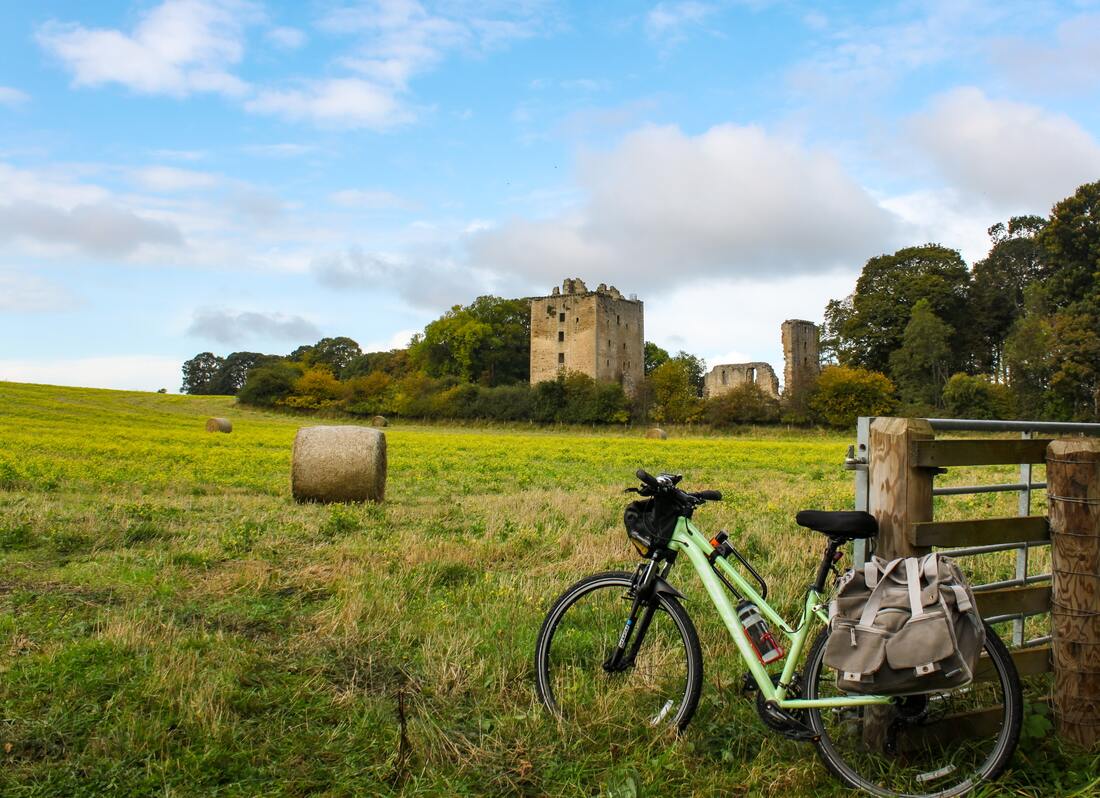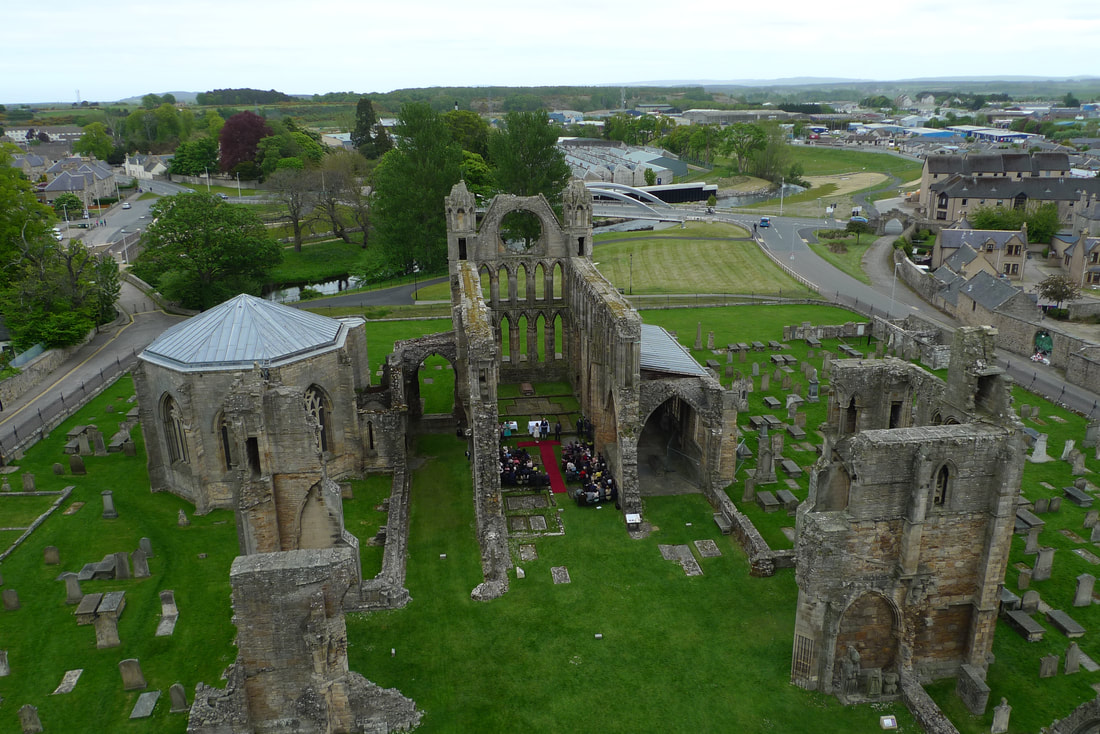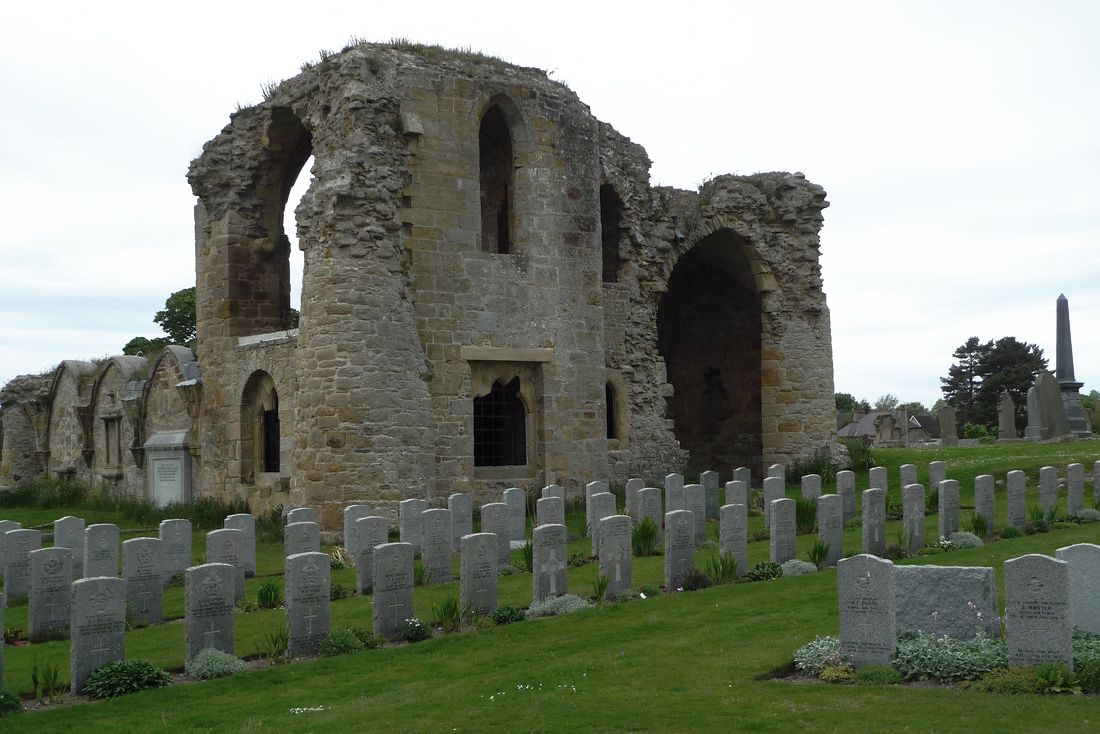|
"Charming, unique and delightful- this sums it up". I wrote this in my journal after staying at the Knockomie Inn in Forres. It has the classic ingredients of a Scottish country house hotel. There's antlers, wood paneling and a bar stocked with over 80 single malts. It's also got a relaxed and homely atmosphere. Hotel location Knockomie is around a mile south of Forres town centre. It is set in 4 acres of gardens. History The architecture of the building is Arts and Crafts. It was built in 1812 as a villa for visiting judges. It was later owned by the Fraser family who made their money from tea plantations in India. Rooms There are 15 rooms, all with their own style. Mine had a neutral and calming decor. There are original features like the fireplace with an old servant bell and the large sash and case window. My favourite thing in the room was the writing desk. I sat here in the evening and kept my travel journal up to date. The only sound that could be heard inside the room was birdsong from the garden, a delight to wake up to in the morning. Dinner The small restaurant is cosy, the staff welcoming and the atmosphere informal. I felt like I was a guest in the home of a good friend, rather than some anonymous hotel. The starter of smoked salmon roulade with capers tasted sharp and fresh. For the main course I could not resist trying a fish n' chips with haddock in whisky batter. Although I couldn't detect much in the way of whisky flavour this was still a very good piece of fish and fluffy chips. The dessert was the highlight. A chocolate ganache that was rich and seriously chocolaty. Whisky bar Knockamie is in the Speyside whisky region. Benromach distillery is just 2 miles from the hotel, so I tried the 10 year old single malt. It has a golden colour and a wonderful flavour combination of fruit, malt and a hint of smoke. The lounge with the real fire is the choice spot to relax with your drink. The owners of Knockomie, Penny and Gavin, have gone to great efforts to make this place feel relaxed and informal. Although there is an air of luxury and grandness in the architecture and decor, you never feel that its stuffy. Gavin told me that they get a lot of cyclists staying here. This put me at ease as I always feel a bit self-conscious turning up at places like this. Especially after hours on the road and looking a bit dirty and disheveled. Breakfast I had poached haddock, served with a few grinds of salt. The fish was delicious and really didn't need anything else to go with it. Then a warm croissant and coffee. In these surroundings it is impossible to rush breakfast. Enjoy the architecture, the large windows where the morning sun floods in and the birdsong from the garden. Exploring Forres Forres is famous for its floral displays and gardens. Getting here
It's around 30 minutes by train from Inverness to Forres. I cycled here on National Cycle Route One.
0 Comments
What better way to explore Scotland's best locations than cycling? Cycling is one of the best things you can do to truly experience the locations you visit and immerse yourself in the beauty of every stop you make. It can be challenging to choose where to go as there are so many great locations to take your bike out for a spin. Luckily, VisitScotland can give you a hand with that. They have teamed up with UNESCO to create the first-ever digital trail.
UNESCO aims to recognise, preserve and educate people about the world's most extraordinary places. These locations are truly unique. Not only do they have the power to help us travel through time, but they enhance the world's cultural and environmental diversity as well. Scotland is the first country in the world to combine 13 locations recognised by UNESCO as 'Designations' in one interactive digital map. You can explore the trail online first to learn more about the history of each spot, or you can visit all of them physically and truly see everything they have to offer. Keep on reading for our list of some of the best destinations for cycling lovers. Whether you fancy some city cycling or something a little bit more challenging, there's something for everyone. But why not immerse yourself in the natural beauty of a Biosphere Reserve or Global Geopark? Biosphere Reserves The South West of Scotland is a cyclists paradise, and the Galloway and Southern Ayrshire Biosphere is no exception. A place of natural beauty and heart-stopping views, cyclists can easily explore the region. The area, which covers 5,268 square kilometres in southwest Scotland, offers some of the best beaches you'll ever see, along with deep woodlands and forests, all providing habitats for a rich diversity of plants and wildlife. If you head further north, you will find the Wester Ross Biosphere. Pristine beaches, gleaming lochs and enchanting forests, this spot offers unique biodiversity, where communities live in harmony with the land and sea, preserving a time-honoured way of life. It's also home to one of the oldest geologies in the world. Global Geoparks Shetland Global Geopark offers many quiet roads in excellent condition for cycling. If you want to take a break from the bike, there’s plenty to do. From walking on an ancient ocean floor to exploring an extinct volcano or even just strolling across shifting sands. This giant geological jigsaw can help you travel through time with rocks that range from 3 billion to just over 300 million years old. The North West Highlands Global Geopark makes for an ideal day with its white sandy beaches, rocky mountain ridges, atmospheric rock caves, grass, peatland, moors, and forest. The earliest evidence of life anywhere in Europe was found in this area. Ready to explore the UNESCO Trail? Head over to the VisitScotland site. This is a very handy cycling wallet for essentials and valuables, like your phone, keys and money. It's from Craft Cadence, a London company that specialises in gear for cycling commuters. They asked me to review their essentials case, so I've been trying it out on my bike rides. My honest first impression of this cycling wallet is that I didn't immediately see the need for it. When I go out on my bike I carry my phone in a pocket, keys in another pocket, wallet in another pocket. I already had a place to put these things, so why do I need a case? But when I thought about it, the essentials case made perfect sense. This case keeps all those things together instead of stashed all over the place where they are more likely to go missing. At the very least it removes that frustration of trying to locate your stuff every time you step off the bike. From day one of using this I became much more organised and didn't have to fumble around pockets or panniers for my essential belongings. I became a convert. The essentials case is genius! More organised I loved that my prep for a bike ride was simply putting all my valuables in the case and slipping the case in the back pocket of my cycling jersey. Job done! When I got off the bike to visit a shop or cafe I only had to look in the case to get what I needed instead of searching through multiple pockets and bags. The case is also surprisingly large so that there is plenty of room to fit in pretty much everything that you can think of. Even a pen, as you can see from my photo. In fact, you can fit a multi-tool and spare inner tube in here if you wanted to dispense with any sort of bags on your bike and still be able to do repairs on the road. The size of the case is also designed to accommodate larger models of smart phones. Fits in a pocket It is important to say that the large size of the case does not mean that it is unwieldy. It still feels compact and will easily fit in the back pockets of a cycling jersey. I would say that the size is the perfect balance between having enough space for your essentials, but not being too big as to be a pain to carry around. Taking a closer look inside, you get lots of pockets, including one with a zip. There is space for cards and straps to keep a phone in place. In short, there is a great variety of storage compartments to keep all your things nicely organised. Waterproof The essentials case is waterproof and this is the key feature that makes this ideal for cycling. When I carry a wallet on a bike ride and it rains heavily it always gets wet. Even if I stash the wallet deep into a pocket it still manages to get wet. Pulling out soggy banknotes or slippy bank cards to pay for coffee is never fun. The essentials case kept my bank cards and bank notes completely dry whenever I used it on rainy days. That included some days with very heavy downpours. The essentials case also gave water protection to my phone. In heavy downpours I previously had to pull over my bike and stash my phone deep into a panier to be sure it would not get damaged. With my phone cosy inside the essentials case I had no worries- the case always kept it dry. Take a close look at the zip and seam. This is what is helping to keep the water out. You can tell that this is a very high quality construction. Cost
The essentials case is currently £29.99. When you consider the amount of space that you get and the waterproof qualities this is good value for money. Summary Initially I was not convinced that I needed a case, but I have loved being able to keep all my valuables in one place when I go on a bike ride. Not only that, but keep them safe from the rain. The case has made my bicycle journeys much more organised and it has now become one of my essential pieces of kit.
It's like a dream. Travelling through tree tunnels, where the branches have joined together to arch over the road. This is what I enjoyed the most about this 26 mile section of National Cycle Route One. Miles of quiet, country roads with sections of woodland that turn the road into a vibrant green corridor.
Highlights of this route:
This route begins at the Spey viaduct. This is a magnificent structure and riding a bike across it is not to be missed.
It's 10 miles from the viaduct to Elgin. The path heads away from the coast, but not so far because some of these roads can get a dusting of sand.
The previous coastal sections of Route One, such as Cullen to Findochty, are spectacular. The inland sections don't have the harbours, rock formations and beaches, but there is still plenty to love.
One thing you must do is pull over and walk into the forests that border some of the roads. These woods reveal a world just as magical as the cliffs and coast.
Within minutes of walking into the forest I was struck by the stillness. I had this feeling that this place has been like this for hundreds of years and not much has changed. The forest floor was covered in moss that was decorated with tiny wildflowers.
It is tempting to put your head down and pedal fast on these roads, but that would mean missing out on experiencing the beauty of these forests.
It is also worth taking notice of the farmlands. I stopped at a pig farm and loved watching these creatures rooting about in the mud, sniffing and grunting.
Elgin
The sudden appearance of a busy town with traffic and lots of visitors is a shock to the system after the forest roads. The Cathedral is a good place to break the journey. It dates from 1224 and is one of the finest medieval buildings in Scotland. Although much of it is a ruin, plenty survives to make it easy to imagine the former grandeur of this place.
My favourite part of the building is getting to climb the spiral staircase of the towers. This gives a brilliant view over the ruins and the town.
There is some very fine architecture to discover. The octagonal chapter house is one of the best preserved parts of the site. Inside there is a stunning carved ceiling where you might just make out the remains of gold paint. There is a statue of a Bishop that tells of the quality of stone carving.
If you have time for a diversion you can follow my 24 mile cycle route to a nearby whisky distillery and Duffus Castle.
Elgin to Forres
This 16 mile section of the route has more of those quiet roads with vibrant green tree tunnels.
At Coltfield I found a group of friendly horses that were keen to investigate my bike.
Then I came across overgrown railway tracks from the closed Burghead branch line. Usually the tracks are lifted from disused railways, so it was unusual to find this. It is possible that the tracks have been lifted since my visit, but let me know in the comments.
Kinloss Abbey
Around 3 miles from Forres is the ruined Kinloss Abbey. It was founded in 1150 by King David 1 and run by a group of Cistercian monks from Melrose Abbey. The abbey declined in importance after 1560 when Protestantism became the religion of Scotland and Catholic abbeys were no longer needed. It explains the state of the buildings today and why there is very little to see.
However, the information boards provide a fascinating insight into the life of this abbey. What I did not appreciate was the large array of job titles and responsibilities that the monks had. For example, the Guest Master was responsible for travellers as abbeys provided accommodation to anyone who needed it.
The Guest Master must have been particularly busy in 1303 when Edward 1 and his army stayed for 2 weeks. They got through a year's worth of food and drink! There was also a Master of Novices who was in charge of training and coaching.
There is a handy floor plan that shows you the layout of the rooms in the abbey. Most I was familiar with, but this was the first time I had come across a Warming Room. There was no heating in the abbey so in the winter months this room helped the monks to stay warm after hours spent in the cold church and cloister.
There is a whisky distillery to see on the way into Forres. Benromach produces Speyside single malt whisky. There are tours and tastings.
Summary
This is an enjoyable section of National Cycle Route One. The highlight is the miles of quiet roads that are bordered with beautiful forests. Try some of the other sections of Route One in the Moray region of Scotland: |
Categories
All
Archives
July 2024
|























